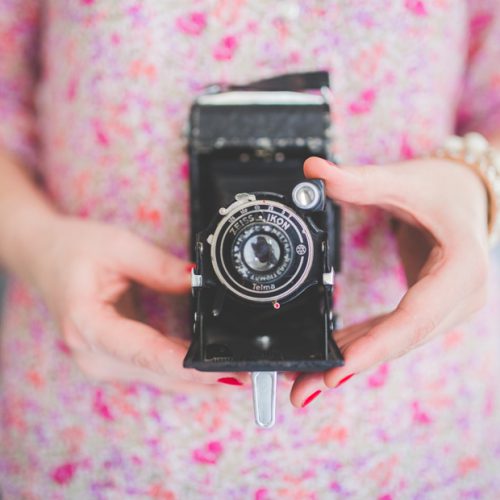
By Ana Isabel Rodrigues – Higher School of Technology and Management, Polytechnic Institute of Beja, Portugal, Business Department | E-mail: [email protected]
The text here presented was written essentially, with excerpts from the proceedings of CIAIQ2016 (Congresso Ibero-Americano em Investigação Qualitativa) held in Porto/Portugal and also the 9th World Conference for Graduate Research in Tourism, Hospitality and Leisure (2017) held in Cartagena/Spain (Rodrigues, 2016, 2017).
Visual methodologies in education have a potential for engaging students in a process of self-reflection in an effort to change behaviours. This essay aims to explore the benefits of image-based methodologies, such as reflexive photography, in tourism educational environments, based on an exploratory exercise undertaken with students in the Tourism Graduation of the Polytechnic Institute of Beja. A group of students participated in a field experience, involving reflective thought, critical dialogue and action, aiming to examine their impressions and perceptions about a small city named Beja, located in the south of Portugal, Alentejo region with the goal of assessing their opinions. It is believed that educational tools like this could provide sufficient stimulation to engage learners in knowledge discovery, and simultaneously develop new skills. Additionally, some thoughts under the experiential learning theory are briefly explored based on the idea that knowledge continuously derived from the experience of the learner.
The use of visual medium for research was first proposed by Collie in the field of anthropology and social scientists started to realize that interviews respond to photographs without hesitation (Hurworth, 2003). In fact, the adoption of photography as a research method has been successfully addressed by a number of academics (e.g. Caldarola, 1985; Schwartz, 1989; Wagner, 1987).This stage marked the beginning of employing photographs to extract information from people, particularly the use of photographs to provoke a response, which became known as photo-elicitation technique (Harper, 1988, 2002). Various visual analysis techniques have been highlighted in handbooks (Rose, 2007; Van Leeuwen & Jewitt, 2001). According to Rose (2007) all images have three potential sites of analysis: (i) the site of production (ii) the site of the image itself, and (iii) the site of the audience.
Regarding to the education field, according to Mitchell (2008) a range of tools might be used to engage participants in visual research (a drawing, simple point-and-shoot cameras, video cameras, and family photographs) are some examples. One of the goals is to enhance social responsibility of the educator among their students, by exploring particular topics generating a mode of representation, a mode of diffusion of new thinking and knowledge based on perspective views, ideas. As argued by Mitchell (2011: xiii) “with the visual creates a generative space for looking, and then looking anew (…) can be a liberating experience”. Apart from that, the Experiential Learning Theory (ELT) provides a holistic model of the learning process, which emphasizes the central role that experience plays in the learning process (Kolb, Boyatzis & Mainemelis, 2001). As Wurdinger and Allison ( 2017:15) state “experiential learning is popular with students as it is considered more enjoyable and leads to deeper learning when compared to didactic approaches”.
This study specifically applied reflexive photography as a visual technique to extract data within a qualitative approach. Photographs produced by the participants correspond to “reflexive photographs” (Harrington & Lindy, 1998). This term was coined by Harper (1988). Empirically, photographs can be used in qualitative research in two different ways: as images produced by the researcher and as images produced by the research participants named as participant-driven photos (Collier and Collier, 1986; Denzin and Lincoln, 1994).
Therefore, in order to examine the perceptions of a group of tourism students about a small city located in the Alentejo region, Portugal, named Beja, reflexive photography was adopted as the research technique. A volunteer sample of students were recruited from the 2nd year of Tourism Graduate Course at the Polytechnic Institute of Beja and disposable cameras were made available for them to take pictures that would illustrate their impressions about the tourist experience in Beja.
The goal of this study was to examine and determine to the degree, as far as possible from a critical and constructive perspective, to which the students formulate their opinions regarding the strengths and weaknesses of a tourist experience in this city. It is important to highlight the fact that these students are currently in the 2nd year of their three year Graduate Course, a reflective and critical opinion is of utmost importance at this stage. The participants were asked to record their thoughts while taking the pictures and later participate in a structured photo elicitation interview and a final focus group. Two fundamental questions were explored within the context of this reflexive photography study: (a) What is the range of student´s impressions considering the stage of their learning process?, (b) What meanings do these students give to their impressions about the strengths and weaknesses of a tourist experience in Beja?
Similar to Harrington and Lindy (1998) procedure, the students who agree to participate in this study were required to engage in the following: (a) participating in a theoretical session about photos and tourism and project briefing, (b) taking photos with disposable cameras in groups and recording their thoughts and impressions in a standard reporter´s notebook for three hours, (c) participating in a structured photo-elicitation interview taking place a maximum of one week. Before the beginning of the study, the following question was addressed: “Take pictures that will illustrate your impressions of the strengths and weaknesses of a tourist experience in Beja or that will help to describe your impressions”. In addition, participants were asked to record in their notebooks the number of the photograph, the primary theme of focus of the photograph, what the photograph meant to them and what was the reason and opinion for taking that photo regarding what they have learned in their tourism graduate course.
After completing the exercise, participants were asked to arrange their photographs in a manner that would best illustrate the sum of their experience or in a manner in which they would feel at ease discussing their photographs with the researcher during the photo elicitation interview. In these interviews, a detailed verbal explanation of each photograph in their perception portfolio was also asked.
As the objective of this study was to explore impressions and opinions based on photographs, a more interpretative technique was needed to analyse the data, such as content analysis. Content analysis was undertaken as a qualitative technique for making replicable and valid inferences from data to their context (Krippendorff, 1980; Bardin, 1979). From this perspective “photographs, videotapes, or any other item that can be made into text are amenable to content analysis” (Miles and Huberman, 1994: 240). Based on this, webQDA software was used for pictures and textual analysis (Souza, Costa, & Moreira, 2016).
In conclusion, this study achieved two main goals. Firstly, identifying and examining important aspects, positive and negative, that could improve the image of a small city in the interior of Portugal, contributing to create a better and more competitive destination image in the future; secondly (and most important) a discussion of emerging pedagogical methods and models is undertaken to demonstrate that teachers have access nowadays to a suite of tools which enable them to support greater learner choice, creativity, reflective thought and self-direction for students. The final goal which was achieved was to explore visual methods as a suitable tool for tourism education, having the reflective photography as an example. Finally, the adoption of visual approaches, methods and techniques within educational contexts offers new insights and perspectives that need to be more explored in the future.
Acknowledgments. The author would like to thank to the group of students from the Polytechnic Institute of Beja, Tourism Graduate Course who agreed to participate in this study.
REFERENCES
Hurworth, R. (2003). Photo-Interviewing for Research. Social Research Update, 40 (1), 1-4.
Bardin, L. (1979). Análise de Conteúdo [Content Analysis]. Lisbon: Edições 70.
Caldarola, V. (1985). Visual contexts: a photographic research method in Anthropology. Studies in Visual Communication, 11(3), 33-53.
Collier, J. and Collier, M. (1986). Visual anthropology: photography as a research method (Rev. ed.). Albuquerque, NM: University of New Mexico Press.
Denzin, N. and Lincoln, Y. (1994). Introduction: entering the field of qualitative research. In Denzin and Lincoln (Eds.) Handbook of qualitative research. pp. 1 17 Thousand Oaks, CA: Sage.
Harper, D. (1988). Visual sociology: expanding sociological Vision. The American Sociologist. Spring, 54-70.
Harper, D. (2002). Talking about pictures: a case for photo elicitation. Visual Studies, 17, 13-26.
Kolb, D. A., Boyatsis R. E., & Mainemelis, C. (2001). Experiential learning theory: previous research and new directions. In Robert J. Sternberg & Li-Fang Zhang (Eds.). Perspectives on thinking, learning, and cognitive styles, New York and London: Routledge Taylor & Francis Group.
Krippendorf, K. (1980). Content Analysis: An Introduction to its Methodology. USA, The Sage CommText Series.
Miles M., & Huberman A. (1994). Qualitative data analysis: an expanded source book. Sage Publications, Thousand Oaks, CA.
Mitchell, C. (2008). Getting the picture and changing the picture: Visual Methodologies and Educational Research in South Africa. South African Journal of Education, 28, 365-383.
Mitchell, C. (2011). Doing Visual Research. Los Angeles, London, New Dehli, Singapore, Washington DC: Sage.
Rose, G. (2007). Visual methodologies: an introduction to researching with visual materials. London: Sage.
Rodrigues, A. (2016). The Camera as an Educational Tool: Reflective Photography for Examining Impressions and Perceptions about a Destination, Proceedings of the 1st International Symposium on Qualitative Research, 12-14 July 2016, Universidade Lusófona, Porto. Disponível em https://proceedings.ciaiq.org/index.php/ciaiq2016/issue/view/16. ISBN: 978-972-8914-62-2.
Rodrigues, A. (2017). Are visual methods a suitable tool for tourism education? The reflective photography as an example, proceedings of the 9th World Conference for Graduate Research in Tourism, Hospitality and Leisure 06-11 June 2017, Cartagena, Spain.
Schwartz, D. (1989). Visual ethnography: using photography in qualitative research. Qualitative Sociology, 12(2), 119-154.
Souza, F. N. De; Costa, A. P.; Moreira, A. webQDA. Aveiro: Micro IO, 2016. Disponível em: .
Van Leeuwen, T. & Jewitt, C. (2001). The Handbook of Visual Analysis, SAGE Publications Ltd.
Wagner, J. (Ed.) (1987). Images of Information: Still Photography in the Social Sciences. Beverly Hills. California: Sage.
Wurdinger, S., & Allison, P. (2017). Faculty perceptions and use of experiential learning in higher education. Journal of E-Learning and Knowledge Society, 13(1), 27-38.





Leave a comment